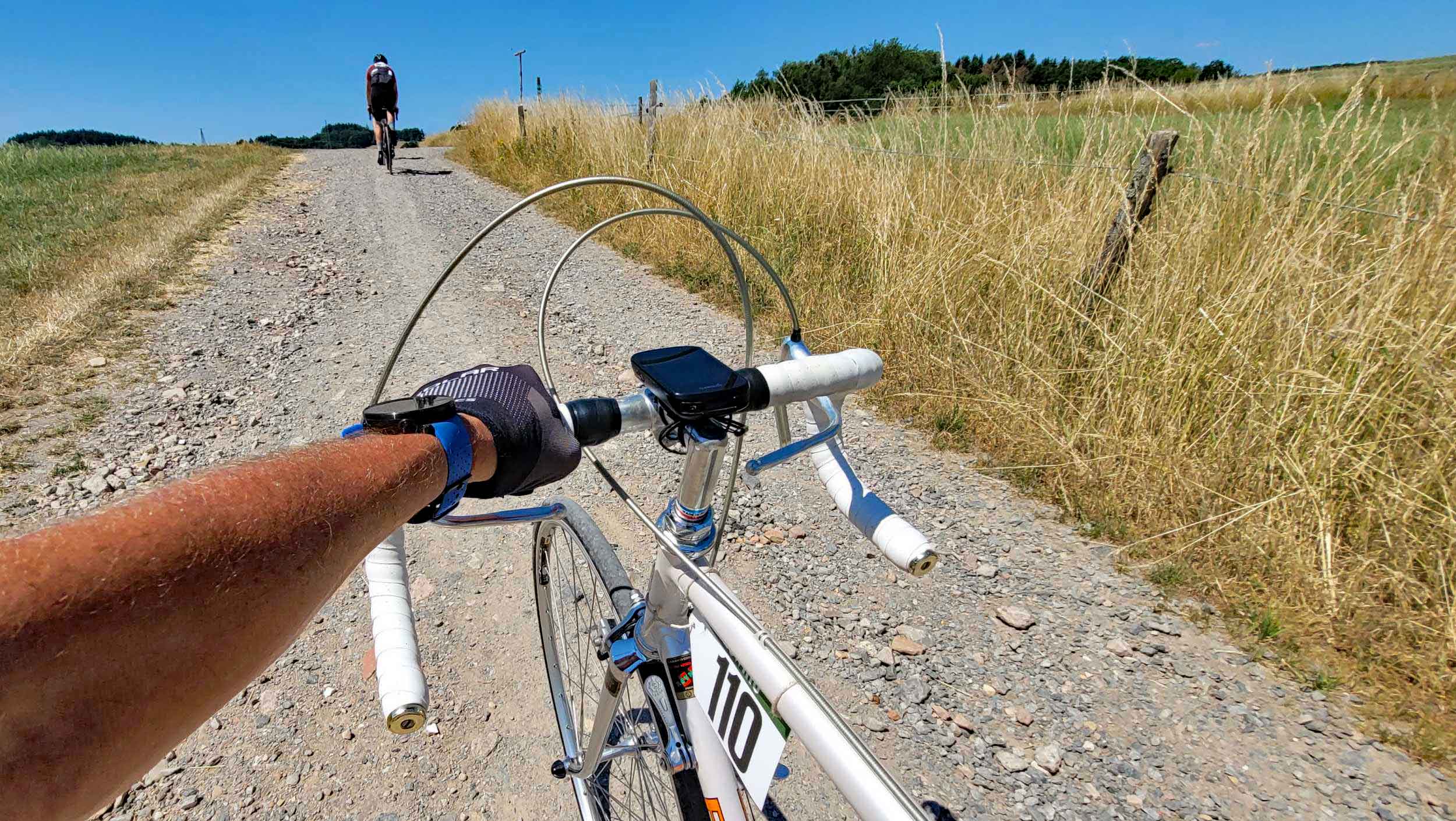A gravel bike strongly resembles a machine from times when gravel roads were the norm. Essentially, it is a tribute to past times when cycling was a completely different experience than it is today. However, the comparison between gravel biking today and cycling in earlier eras also illustrates how the sport has evolved over time. Timo Rokitta steps into a gravelly time machine and heads back to the 1980s.
In a world dominated by modern technologies and high-performance sports, there are now events that transport us back to the past and celebrate the roots of cycling, naturally away from public roads. One such event is Velowino in Weinheim, Germany, where cyclists ride on unpaved roads with historical bicycles.

In the past, road bikes were designed to navigate the then-unpaved roads. Today, tubeless tyres, smooth asphalt, electronic shifting and disc brakes have become the norm. However, at Velowino, it is not about speed or race results but rather about the experience and sharing a common passion for the history of cycling. Participants must use bicycles built before 1987 that meet specific criteria. These criteria include steel frames, downtube shifters, and external cable brakes on the handlebars. Participants often wear historical cycling attire to enhance the nostalgic atmosphere of the event. The event requires a sense of the right moment to change gears and brake in a timely manner. The riding experience thus becomes a true challenge.

Together with my cycling buddy Tim, I am ready at exactly 6:30 a.m. when the starting shot is fired. Today, we are riding on two old, 11-kilogram heavy steel bikes: a French Peugeot and an Italian Benotto - our gravel bikes remain in the garage today. We also don't have wide tubeless knobby tyres - instead, we ride on 25-millimeter tyres with 6 bar of air pressure over the gravel.
On well-rideable forest paths, we ascend 300 meters in altitude through the cool morning air. After the descent, we roll at a leisurely pace towards Ladenburg by the Neckar River. At the refreshment station, we replenish ourselves with a variety of delicacies provided by the organiser.
Then, the toughest climb of the entire route awaits us. We ascend over 400 meters to the "Weißen Stein" (White Stone). With a gradient of 12 percent, I have to exert myself vigorously because the smallest gear ratio on my 40-year-old Peugeot is only 42 teeth in the front and 24 teeth in the rear.
After that, we continue to traverse the Odenwald, constantly switching between trails and small roads filled with potholes, where no cars are encountered.
After 130 kilometers with 2,500 meters of elevation gain, we reach the finish line in just under 6 hours, both exhausted. Riding with the old heavy steel bikes on gravel was a special experience and challenge for us.
For us, it is clear that today's modern gravel bike has bridged the gap between the past and present of cycling. It combines the nostalgia of past bike races with modern technology, enabling riders to have a more comfortable ride, not just on gravel trails.
Velowino is an extraordinary event that offers the fascinating world of classic gravel cycling, allowing participants to explore the picturesque wine region of Weinheim. However, for those who wish to participate in the event with a gravel bike, Velowino also provides the opportunity to ride on a specially designed route for modern gravel bikes.
If you would like to follow in Timo’s tyre tracks, you can find his route here: